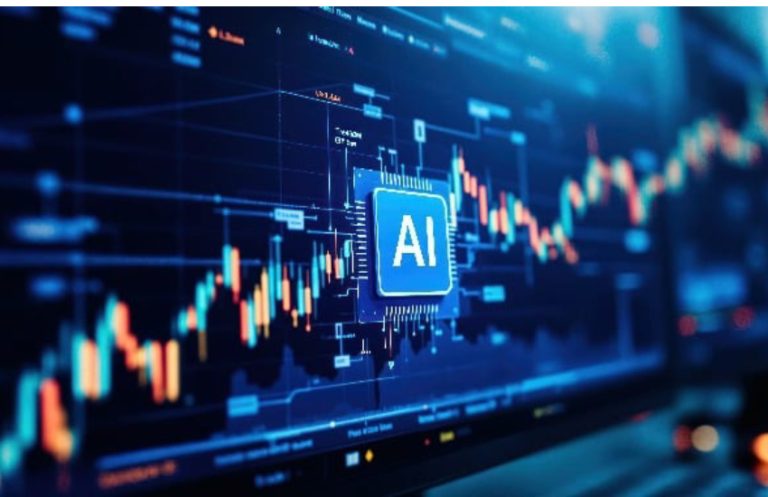AI Image to Video: A Game-Changer for E-commerce Marketing

Contents
- The Evolution of Visual Content in E-commerce
- Understanding AI Image-to-Video Technology
- Enhancing Customer Engagement with AI Image-to-Video
- Improving Social Media Marketing
- Cost-Effective Content Creation for Small Businesses
- Personalization and Localization at Scale
- Integration with User-Friendly Video Applications
- Boosting SEO and Online Visibility
- Case Studies: Success Stories in E-commerce Marketing
- Overcoming Challenges with AI Image-to-Video
- Future Prospects of AI Image-to-Video in E-commerce
- Conclusion
In the rapidly evolving landscape of e-commerce, businesses are continually seeking innovative ways to engage customers and boost their online presence.
One significant advancement that has reshaped e-commerce marketing strategies is the use of artificial intelligence (AI) to transform static AI images to videos. This shift is redefining how products are presented and consumed, creating more interactive and compelling shopping experiences.
This article explores how AI-driven image-to-video technology is empowering e-commerce marketers to enhance customer engagement, improve conversion rates, and drive sales.
The Evolution of Visual Content in E-commerce
Visual content has always been a cornerstone in e-commerce, deeply influencing consumer behavior and purchase decisions. High-quality images help communicate product details and build trust, yet static photos have limitations in showing a product’s full potential.

In response to growing consumer demand for immersive content, e-commerce brands are turning to videos, which offer a deeper, more interactive perspective of products in use, highlighting features and creating a stronger emotional connection with customers. With AI image-to-video technology, this dynamic content is now accessible and easy to produce at scale.
Understanding AI Image-to-Video Technology
AI image-to-video technology leverages sophisticated algorithms to convert still images into engaging video content. The process involves three main stages:
1. Image Analysis: The AI system analyzes various elements within an image, such as color, texture, and shape, to understand the visual aspects of the product.
2. Content Generation: Based on this analysis, the AI generates video sequences that display the product from different angles, simulate usage scenarios, and highlight key features.
3. Customization: AI tools also allow for customization, enabling users to add elements like background music, voiceovers, text overlays, and branding to tailor the video for different marketing channels and target audiences.
This process significantly reduces the time and skill required to produce high-quality videos, making it accessible to businesses of all sizes and transforming e-commerce marketing.
Enhancing Customer Engagement with AI Image-to-Video
Videos naturally capture more attention than static images, conveying more information in a shorter span. Through AI image-to-video technology, e-commerce brands can create compelling product demonstrations, tutorials, and even brand stories.
For instance, a fashion retailer might use AI to create videos showing how clothing items fit on different body types, offering a realistic view of the fit and style.
This dynamic approach not only increases time spent on product pages but also drives higher engagement rates, encouraging potential customers to explore more products.
Improving Social Media Marketing
Social media platforms favor video content due to its high engagement potential. By converting product images into videos, brands can create visually rich ads, stories, and posts that resonate with their audience on platforms like Instagram, Facebook, and TikTok.
This is where AI social media marketing strategies come into play. AI-generated videos allow marketers to keep up with the fast-paced nature of social media by providing a constant stream of relevant content that can be tailored to each platform.
This approach maximizes reach and helps brands stay top-of-mind with their target audience.
Cost-Effective Content Creation for Small Businesses
Traditional video production can be resource-intensive, requiring significant investment in equipment, software, and expertise.
AI-driven image-to-video tools offer a more affordable alternative by automating much of the video creation process.
Businesses can now generate professional-grade videos without the need for large budgets, making it particularly advantageous for small to medium-sized enterprises aiming to compete in a crowded market.
By using a reliable AI image-to-video tool, even smaller businesses can keep their content fresh and relevant while maintaining cost efficiency.
Personalization and Localization at Scale
AI enables the creation of personalized video content that can be tailored to individual customer preferences.
By analyzing customer data and browsing patterns, AI can generate videos that highlight products of interest to each unique user, creating a customized shopping experience.
Additionally, AI facilitates localization, allowing businesses to easily produce videos in different languages or adapt them to specific cultural contexts, thus expanding their reach into global markets. This personalized approach can significantly boost customer loyalty and repeat business.
Read More: New College Grading System in Philippines 2024
Integration with User-Friendly Video Applications
The integration of AI image-to-video technology with accessible video applications has further democratized content creation. Platforms like video apps offer intuitive interfaces that allow users to input images and effortlessly generate videos.
These video apps often include customizable templates, access to stock footage, and built-in editing tools, allowing businesses to produce polished, on-brand content in minutes.
By simplifying video creation, these tools free up time for marketers to focus on their strategic goals rather than the technical details of production.
Boosting SEO and Online Visibility
Incorporating video content into product listings and marketing materials not only enhances the customer experience but also improves SEO.
Search engines prioritize websites with diverse content types, including videos, leading to higher search rankings.
AI-generated videos can also increase the time customers spend on a page, reduce bounce rates, and create additional opportunities for keyword optimization.
Videos are more likely to be shared across social media, amplifying the content’s reach and driving organic traffic back to the site.
Case Studies: Success Stories in E-commerce Marketing
Fashion Retailer: A clothing brand that used AI to create videos showcasing new collections on virtual models. This innovative approach led to a 30% increase in online sales and a marked improvement in customer engagement.
Electronics Store: An electronics retailer used AI-generated videos for product demonstrations, which helped customers better understand product features and functionality, resulting in a reduction in return rates.
Home Decor Company: A home decor business that used AI to produce videos displaying furniture in various room settings, making it easier for customers to visualize products in their own spaces and increasing conversion rates.
Overcoming Challenges with AI Image-to-Video
While AI image-to-video technology provides numerous benefits, it also presents a few challenges that e-commerce businesses should consider:
Quality Control: Ensuring that AI-generated videos align with brand standards is essential. Automated content should be reviewed for accuracy and quality to maintain a consistent brand image.
Data Privacy: Leveraging customer data for personalized content requires adherence to data protection regulations to ensure customer trust.
Technology Integration: Integrating AI tools with existing e-commerce platforms may require technical expertise, but the long-term benefits often outweigh the initial setup investment.
Future Prospects of AI Image-to-Video in E-commerce
As AI technology continues to advance, the future of AI image-to-video looks promising. Expected developments include:
Real-Time Video Generation: AI may soon enable real-time video creation, allowing for instant content updates and personalized shopping interactions.
Enhanced Interactivity: Future AI-generated videos could incorporate interactive elements, enabling customers to engage directly with the video, such as rotating products or selecting color options.
Improved AI Algorithms: Continuous improvements in AI will likely lead to even more sophisticated, lifelike video outputs, enabling brands to produce high-quality, engaging videos that closely resemble human-created content.
Conclusion
AI image-to-video technology is transforming e-commerce marketing, enabling businesses to engage customers with rich, dynamic content that was once costly and time-consuming to produce.
By leveraging AI, brands can create immersive shopping experiences, improve social media engagement, and enhance their SEO efforts—all while maintaining cost efficiency.
As this technology evolves, it will continue to provide e-commerce businesses with powerful tools to connect with global audiences, build brand loyalty, and drive growth in an increasingly competitive market.






